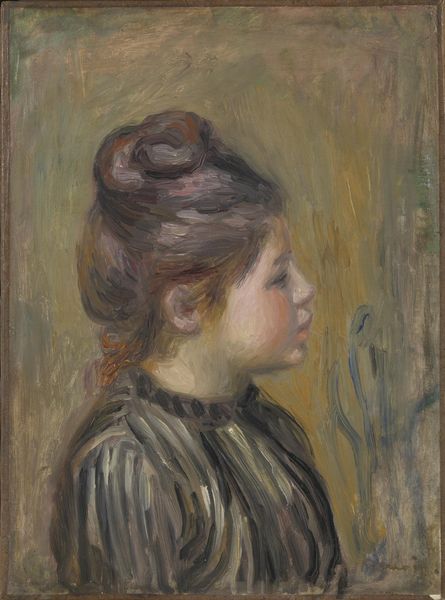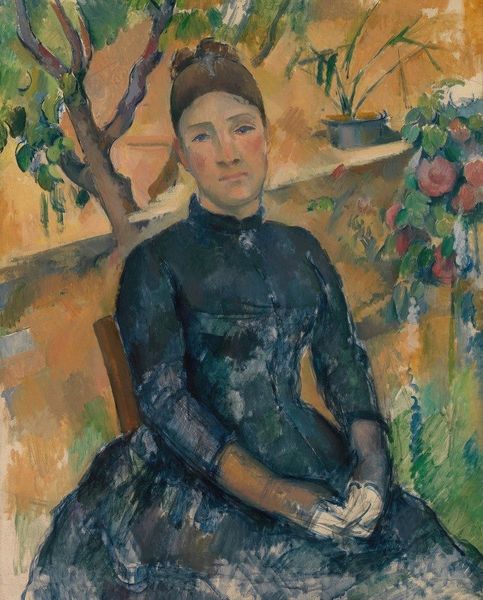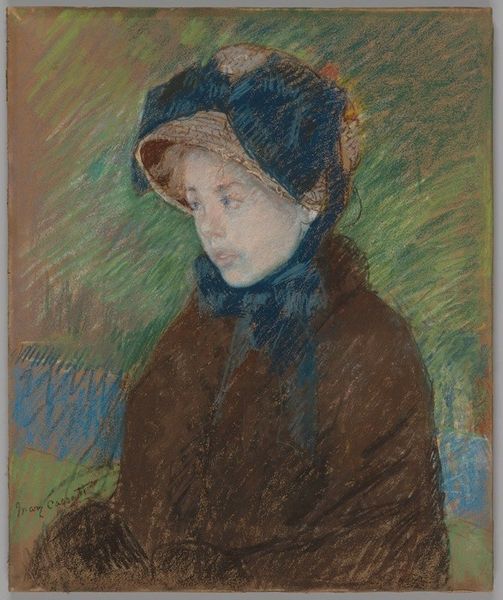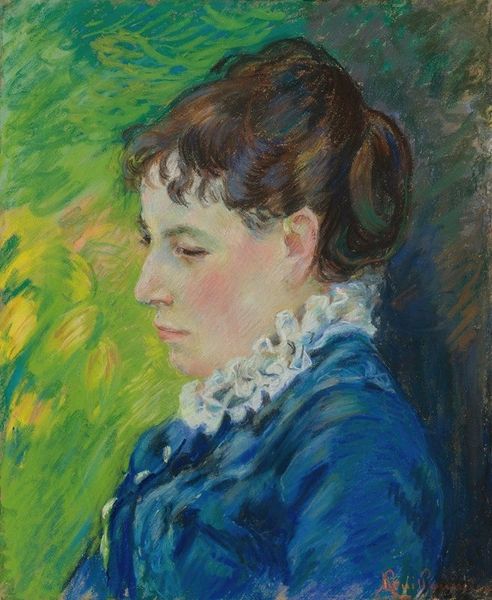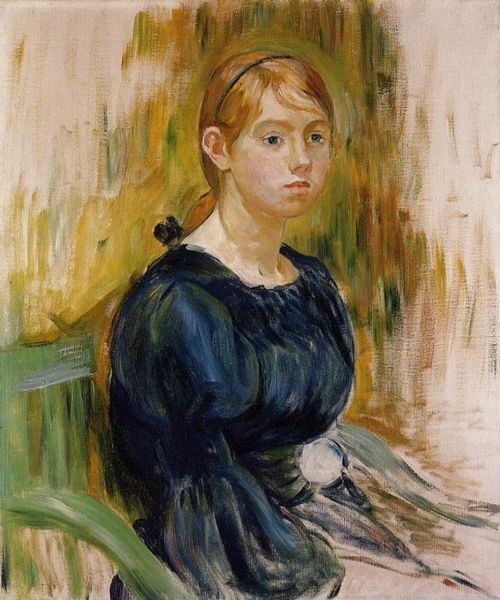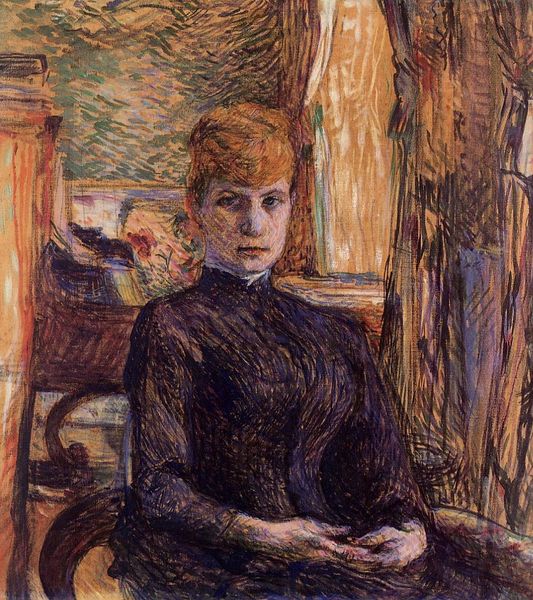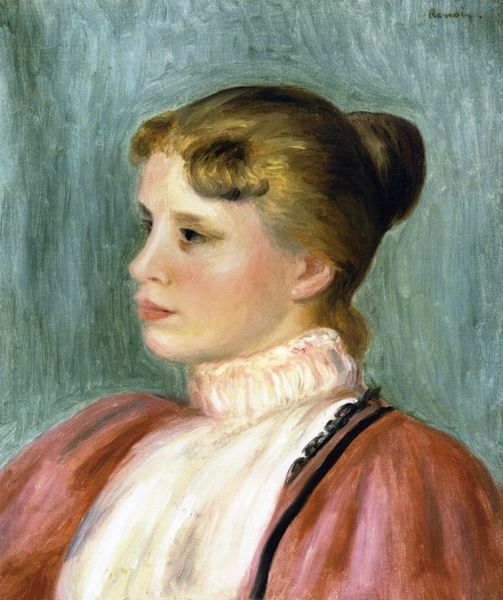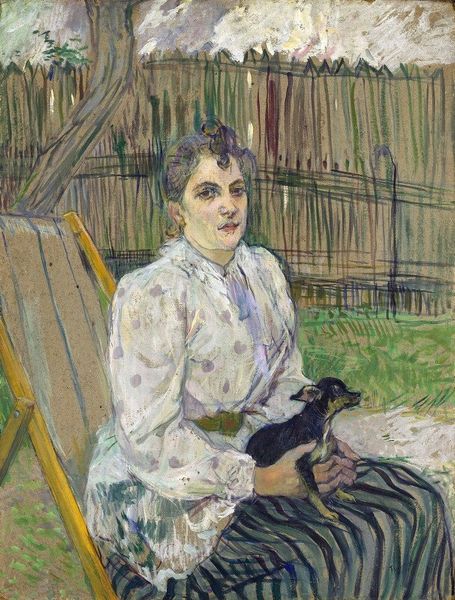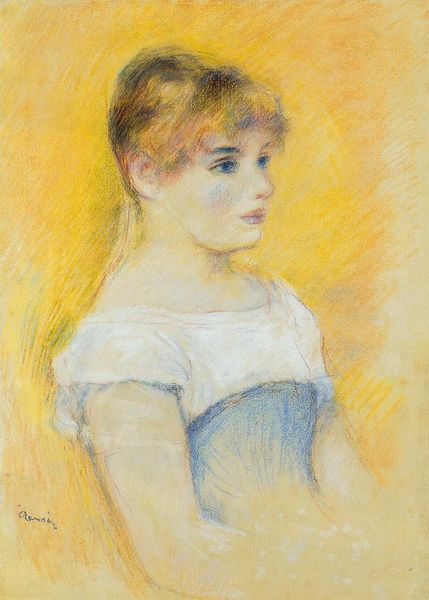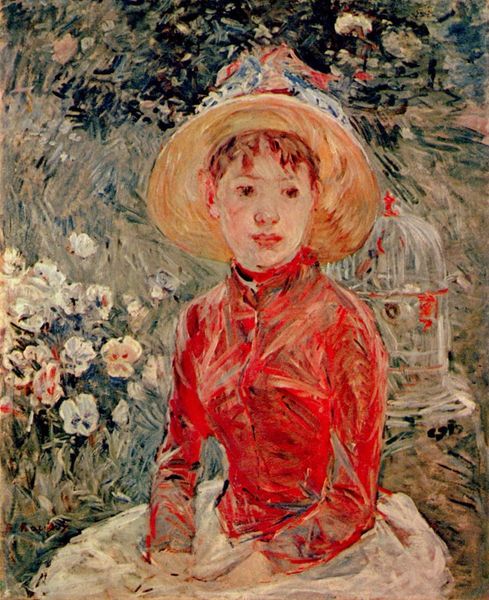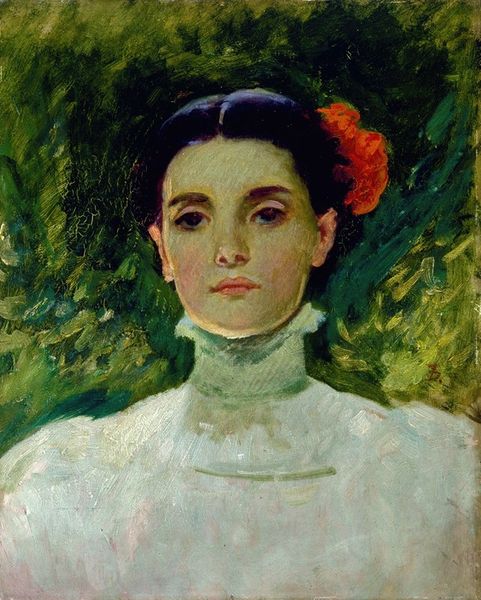
Copyright: Public domain
Curator: Take a look at Mary Cassatt's "Young Woman with Auburn Hair in a Pink Blouse," created around 1895. The piece is done in pastel. What are your first impressions? Editor: The immediacy of the pastel lends a lovely softness to the scene. The subject seems serene, almost detached, gazing into the distance with what appears to me as quiet determination. Curator: Cassatt, as we know, focused much of her artistic energy on portraying women in their domestic and social spheres. One wonders about this woman's place within the shifting social structures of the late 19th century. Cassatt often challenged academic conventions that traditionally relegated women to passive roles. Editor: Absolutely, her perspective as a woman artist is critical here. This isn’t simply a rendering of female beauty; it’s an assertion of individuality and presence. Notice the woman's gaze; it suggests interiority, agency. The loosely sketched background invites us to project narratives onto her. Curator: Precisely! Cassatt’s choice of pastel contributes to the artwork's accessible nature, moving beyond the formal demands of academic oil painting to allow for broader dialogues in exhibitions. The textured strokes and muted palette also evoke a specific mood; how do you read it? Editor: Melancholy, definitely, but with resilience. There's a weight in her eyes, maybe a weariness. I see it reflecting the constrained expectations placed upon women, as well as an unspoken defiance. That little black ribbon, such a subtle touch, carries a hint of rebellion in it. Curator: I agree. Examining the artwork within its socio-political environment and the debates about women's rights in America helps to illuminate its deeper significance, a narrative that surely extends far beyond aesthetic representation. Editor: And considering Cassatt's artistic circle – her engagement with Impressionism, for instance, as well as Japanese prints, all influence the way we see this figure and the way she reflects the possibilities and restrictions of being a woman. Thank you for bringing this lovely painting to my attention. Curator: My pleasure. Considering this painting now, I see an example of how we can view portraits not as documentation, but as potential portals into an array of individual and shared historical, cultural experiences.
Comments
No comments
Be the first to comment and join the conversation on the ultimate creative platform.

